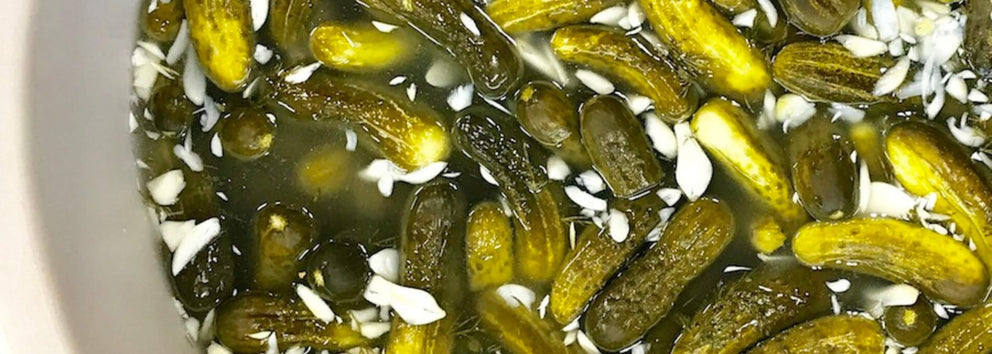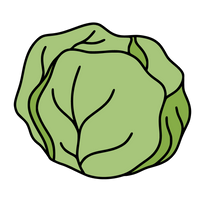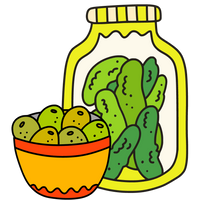
A batch of fermented vegetables relies upon four core variables for success. These pickle fermentation process fundamentals must be in place for your ferment to deliver on flavor, texture, composition, and most important, edibility.
The Salt: Quality here is absolutely key. Using a higher-end, fine sea salt to make your pickle brine is optimal because it’s less processed and contains a higher mineral count than table salt. Sea salt is also non-iodized, important because iodized salt will inhibit the growth of good bacteria. We’ve found that fancy salts like pink Himalayan sea salt or black Hawaiian lava salts are more expensive options that do not markedly improve the quality of the ferment. (It’s kind of like using an incredibly fine, extra virgin olive oil to cook with.) Save your pricey salt to flavor your meals, not your pickle batch. We use a fine sea salt from Spain that is recognized as premium quality to make our pickle brine. Salt quantity is also important. Too much salt will keep the probiotics from flourishing and too little will cause bad bacteria to thrive and spoil the batch. The even distribution of salt throughout the batch is critical, as unevenness causes inconsistencies within the batch, resulting in spots of spoilage.
The Environment: Fermentation must take place in an oxygen-free (or what’s also called an anaerobic) environment. This is achieved through the use of airlocks, which allow gas to escape the batch while keeping oxygen out. Gases are created when the most molecular changes are occurring in the first few days of fermentation. Our barrels sputter, burb, bubble and look pretty messy—all normal! The anaerobic environment allows good bacteria (probiotics) to flourish and causes bad, potentially harmful bacteria to perish. The most common reason a batch of fermented vegetables goes wrong is that oxygen is present in the first few days of fermentation, the most critical period of the ferment. Another ‘environment imperative’ for making brine fermented pickles is they must be completely submerged under the brine when the fermentation lid goes on. A flexible rubbery meshed lid is the solution here, along with using the proper vessel for the job, a barrel or container with a neck.
The Time: A batch of fermented pickles needs about ten days to ferment. Ish. Of course this changes based on what vegetables are present in the ferment. Porous, thinly shredded cabbage ferments faster than larger, skinned cucumbers, so process time on kraut can be as short as 3-5 days. In the summer months—even in our temperature-controlled, air-conditioned commercial kitchen, fermentation occurs at a faster rate than in winter. The time needed to complete fermentation is most impacted by temperature, the next key variable.

The Temperature: An optimal fermentation temperature occurs at about 70 degrees F. Again, time of year seems to impact fermentation rate and progress (in our experience anyway), another reason why it’s challenging to guarantee uniform and 100% consistent results across multiple batches. At the end of a batch’s fermentation period, we monitor the pH-- if it measures between 3.0 and 3.5 we consider it done. We also salinity-test the batch at this time to make sure it measures at or around 10%. Then comes the all-important taste test—to make sure flavor is full-bodied. That delicious “fermented finish”, the unique aftertaste attributed to fermented products, sets in at the tail end of a ferment and is another indicator of its doneness. At this point, if our batch meets the mark, the barrels are transferred to refrigeration, slowing the ferment to a near-stop. Fermented pickles can hang in the fridge for months (we’ve had them shelf life tested and the official lifespan is 18 months). They’re so delicious however, they'll be consumed long before that time.
We send our fermented vegetable products to a third party lab to verify their probiotic count, read all about that in our article Pickles’ Trip to the Lab: Getting Verified Probiotic Counts.








